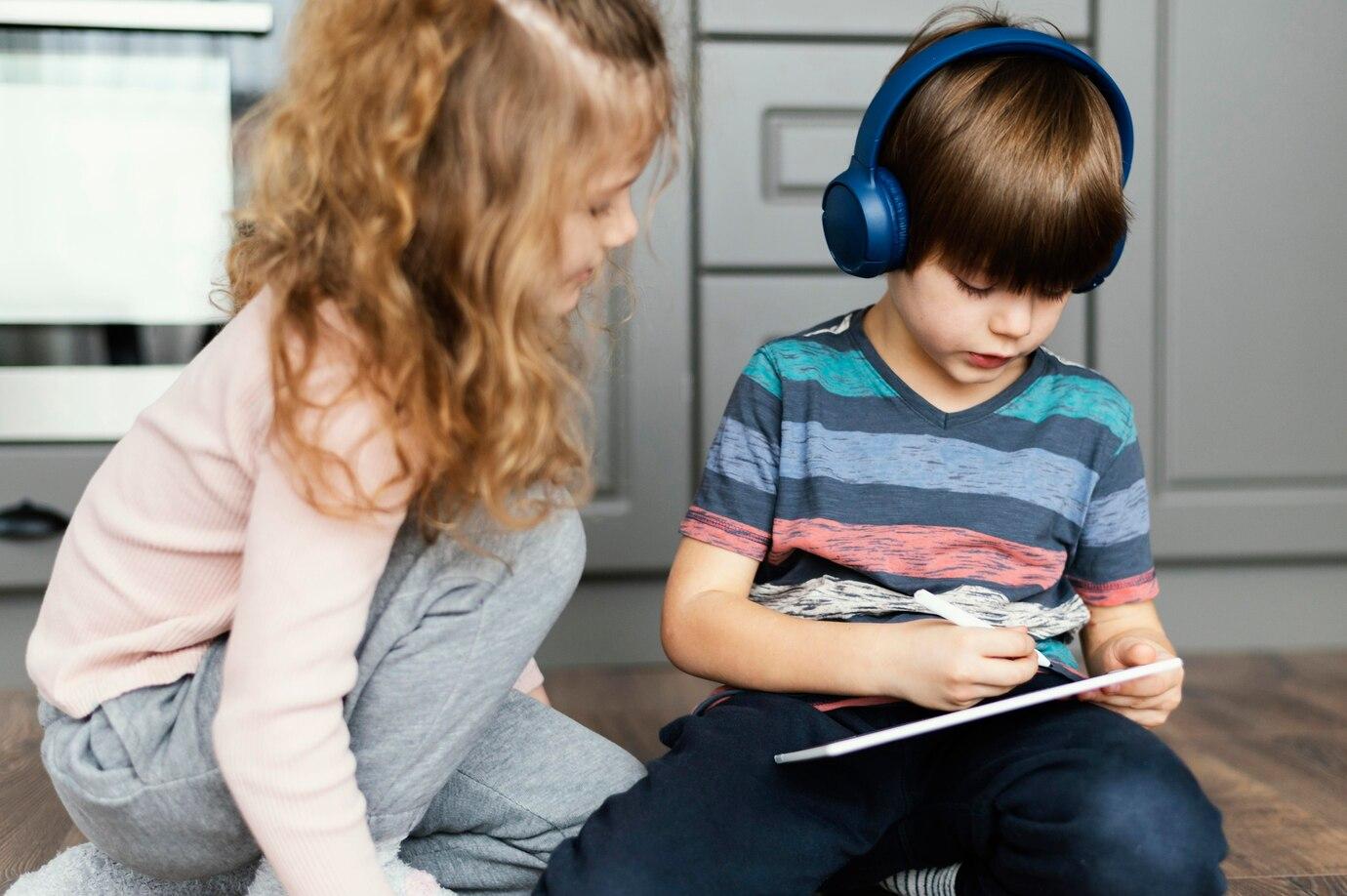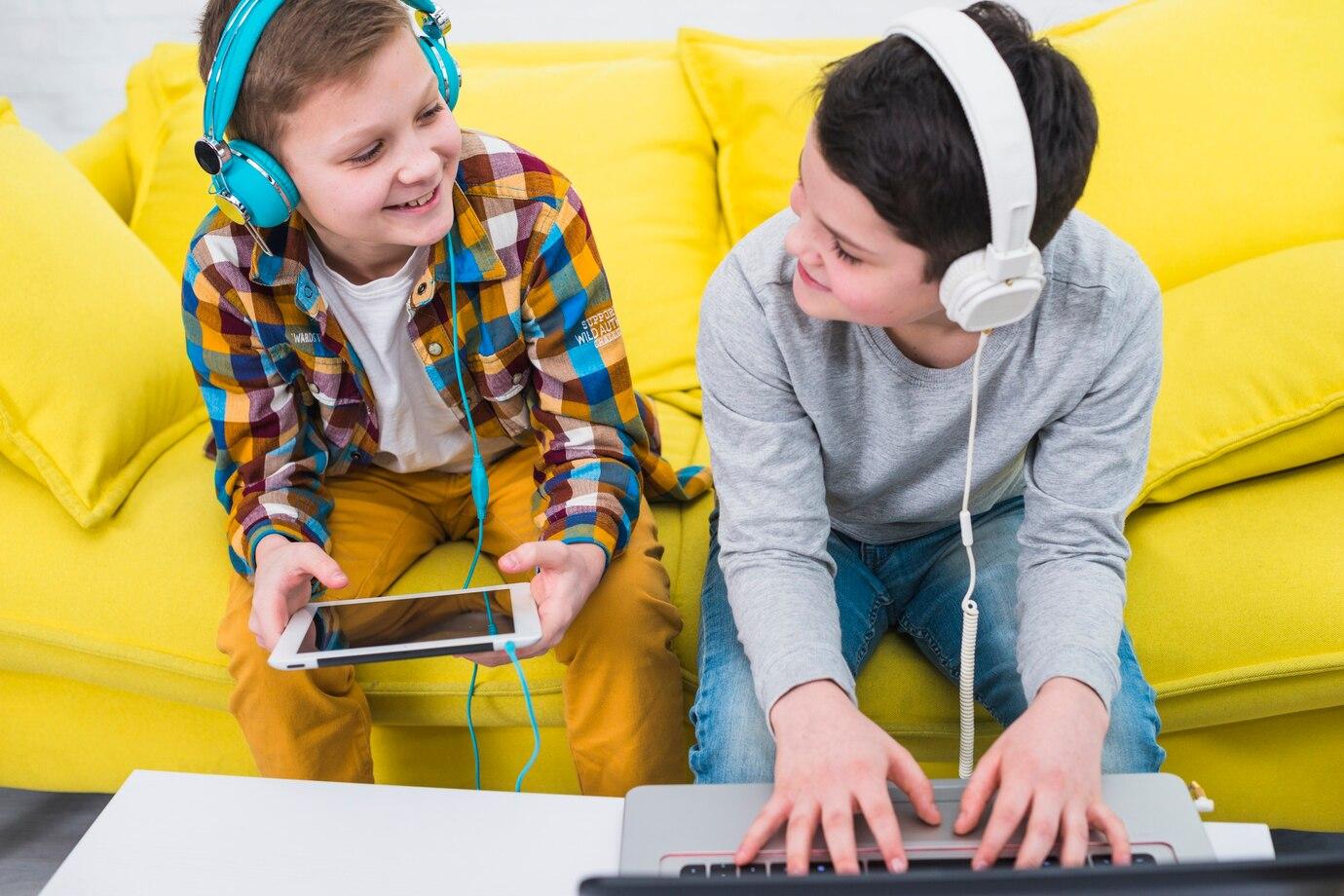Do you want your child to become a better listener? Sound buttons might be the fun and educational tool you’re looking for! These interactive devices help children focus their attention, recognize different sounds, and improve their listening abilities. When kids press these colorful buttons, they hear various sounds that capture their interest and teach them valuable skills at the same time.
Sound buttons are special tools that play sounds when pressed. They come in many shapes, sizes, and types. Some play animal noises, while others might play musical notes or even words and phrases. These engaging devices make learning fun for children of all ages, especially those who are developing their listening skills.
What Are Sound Buttons?
Sound buttons are simple yet powerful digital tools designed to engage children through audio feedback. They typically consist of a button or pad that, when pressed, produces a specific sound. These buttons come in various forms:
- Interactive toys with built-in sound buttons
- Educational devices that play words, letters, or numbers
- Musical sound buttons that play notes or instrument sounds
- Animal sound buttons that mimic different creatures
- Recordable buttons where parents or teachers can customize messages
These versatile tools can be used at home, in classrooms, or during therapy sessions. Their simplicity makes them accessible even for very young children, while their educational benefits extend to older kids as well.
How Sound Buttons Support Listening Development
With the right resources, such as SoundBoard Button, parents and educators can harness the power of sound buttons to support kids’ learning and development.
Learning to listen well is one of the most important skills a child can develop. When children use the right sound buttons from soundboardbuttons.com, they become more engaged with the sounds around them. This website showcases various sound buttons that produce clear, distinct sounds, which help children practice focusing on specific audio cues – an essential part of developing strong listening skills.
Sound buttons work by creating a direct connection between a child’s action (pressing the button) and an audio response. This cause-and-effect relationship helps children understand that listening is an active skill, not a passive one. Here’s how they support listening development:
Improving Auditory Discrimination
Auditory discrimination—the ability to distinguish between sounds—is vital for language development and reading success. Sound buttons support this skill by enabling kids to hear sounds, compare similar ones, and notice subtle differences. They also strengthen sound pattern recognition, aiding children in understanding spoken language and improving their ability to follow directions.
Additionally, this skill benefits reading, as distinguishing between letter sounds is essential for learning to decode words effectively.
Enhancing Attention and Focus
Many children face difficulties maintaining attention, especially in noisy environments, and sound buttons offer effective solutions. They create a focused listening experience, teach children to wait and listen for specific sounds, and provide immediate feedback when sounds are correctly identified.
By making listening interactive and engaging, regular use of sound buttons helps kids sustain attention on audio input, a skill that naturally carries over to classroom instructions, conversations, and other vital listening situations.
Types of Sound Buttons for Different Age Groups
Different age groups benefit from different types of sound buttons. Here’s a breakdown of what works best for each stage:
For Toddlers (1-3 years)
Toddlers are just beginning to explore sounds and make connections. For this age group, simple sound buttons work best:
- Large, colorful buttons that are easy to press
- Buttons that play animal sounds or simple musical notes
- Durable designs that can withstand rough handling
- Buttons with clear, distinct sounds rather than complex audio
At this age, the goal is simply to help children connect actions with sounds and begin recognizing familiar noises.
For Preschoolers (3-5 years)
Preschoolers can benefit from more advanced listening activities using sound buttons. These include buttons that tell short stories, ask and answer questions, or play letter sounds and simple words. Additionally, sound buttons can be incorporated into engaging games and activities.
These tools not only make learning enjoyable but also support vocabulary building and foster improved listening habits, helping preschoolers advance their language and auditory processing skills effectively.
For School-Age Children (6-10 years)
Older children can utilize sound buttons for advanced learning activities, such as using recordable buttons to create custom messages, integrating sound buttons into reading tasks, employing them for music education and rhythm training, and leveraging interactive devices to support language learning.
For this age group, sound buttons often complement other educational tools, enhancing engagement and providing additional layers of interactive learning according to their growing cognitive and creative capabilities.
How Can Sound Buttons Be Used for Fun Activities?
Sound buttons become even more effective when incorporated into engaging activities. Here are some ideas that parents and teachers can try:
Sound Scavenger Hunts
Create a fun game where children listen for specific sounds and press the matching button when they hear them. This activity can be adapted for different skill levels:
- For beginners: Use distinct sounds like animal noises or vehicle sounds
- For intermediate listeners: Use similar sounds that require careful listening
- For advanced listeners: Include environmental sounds or language elements
This game turns listening practice into an exciting challenge that children enjoy.
Sound Pattern Games
Pattern recognition is a key listening skill, and sound buttons make learning it fun. Begin by creating a sequence of sounds using different buttons and ask the child to listen carefully. Have them repeat the pattern by pressing the buttons in the same order, gradually increasing their length and complexity as they progress.
This engaging activity supports the development of sequential auditory memory while keeping the learning experience enjoyable and interactive.
Storytelling with Sounds
Sound buttons bring stories to life by enhancing engagement and creativity. As you read a story aloud, provide children with sound buttons corresponding to elements in the narrative. They press their buttons whenever the associated sound appears, making the storytelling interactive and immersive.
Encourage kids to create their own stories using the sounds, combining listening skills with imagination and comprehension. This activity adds excitement while fostering critical thinking and creativity.
What are the Benefits Beyond Listening Skills
While sound buttons primarily aid listening development, they offer additional benefits across language, cognitive, and social skills. They help children learn new vocabulary, practice pronunciation, understand sound-word connections, and improve mimicking for language growth. Cognitively, they enhance memory, critical thinking, problem-solving, and concentration by focusing on audio input.
Socially, sound buttons encourage turn-taking, collaborative activities, sharing observations, and communication of preferences, fostering essential interpersonal skills alongside auditory learning. Their versatility makes them a powerful tool for comprehensive child development.
How Parents Can Choose the Right Sound Buttons
Choosing the right sound buttons for your child can seem daunting given the variety available. Start by considering your child’s age and listening abilities to ensure suitability. Opt for durable, high-quality buttons that produce clear sounds and feature adjustable volume controls for flexibility.
Select sound buttons aligned with your child’s interests to boost engagement and make learning enjoyable. The best sound buttons grow with your child, offering increasing challenges as their listening skills advance and develop further over time.
Conclusion
Sound buttons offer a powerful way to help children develop better listening skills through play and interaction. These simple devices create engaging experiences that naturally improve auditory discrimination, attention, and focus. By incorporating sound buttons into daily routines and educational activities, parents and teachers can help children become active, skilled listeners.



